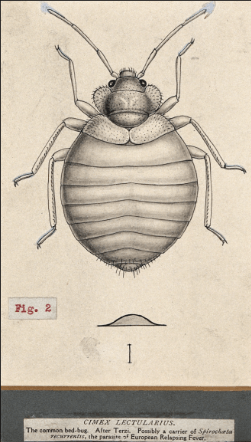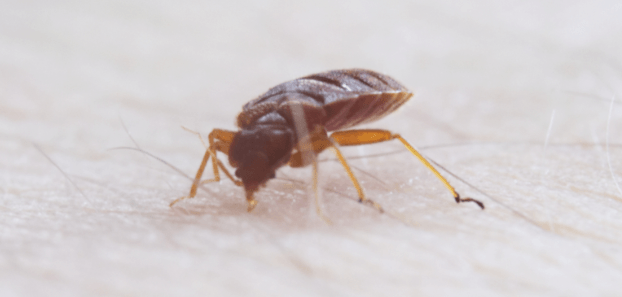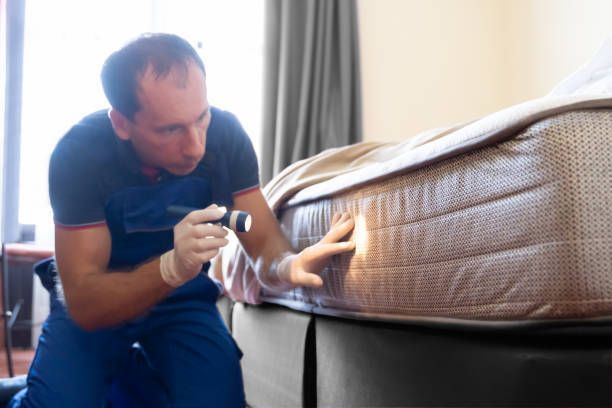The Facts Behind 8 Common Bed Bug Myths
Bed bugs all but disappeared in the decades following World War II thanks to improved hygiene and the use of pesticides. Fast forward half a century, and an outbreak after the 2000 Summer Olympics in Sydney has brought them back to every US state, with experts saying this may be the worst bed bug revival yet.
With their growing populations, more people are likely to come across the tiny pests, likely through the itchy bites for which they’re so well known. While their bites may be familiar, a variety of other bed bug information out there simply isn’t true. We’re busting eight bed bug myths so you can rest easy.
The facts behind 8 Common Bedbug Myths
1.
You can’t see a bed bug. Assuming you have decent vision, you should be able to see adult bed bugs and eggs with your naked eye. Also keep a look out for fecal matter, which resembles marks left by a felt-tip pen. You may also notice the red or rust-coloredstains that are left behind when bed bugs are crushed. And if you can’t see them, you may smell them… Bed bugs emit a musty smell when they panic, like when you crawl into bed.
2. Bed bugs can fly. Bed bugs lack wings, a critical prerequisite for flight. Traveling by foot, bed bugs can move about a meter (three feet) a minute
3. Bed bugs transmit diseases. Thankfully, this one is false too. There have been absolutely zero reported cases of bed bugs transmitting disease to humans. They do carry human pathogens, however. As many as 27 viruses, bacteria, protozoa and more have been found in bed bugs, but these microbes do not reproduce or multiply within the insects.
4. Bed bugs reproduce quickly. Not compared to other insects… a common housefly lays 500 eggs over three to four days, while an adult, female bed bug produces only about one egg per day. Each egg takes 10 days to hatch, then it’s another five to six weeks until the baby has completed adult development and has the capability to reproduce.
5. Bed bugs prefer to live in dirty places. It may seem like bed bugs are attracted to dirt and grime, but what they’re really after is warmth, blood and carbon dioxide. Any place from a swank downtown loft to a homeless shelter could provide a comfortable home. While they are known for their prevalence in low-income housing, this is a result of dense populations and a lack of money to pay for proper elimination strategies, not the bug’s preference.
6. Bed bugs only bite at night. While they are generally nocturnal, like a human, bed bugs will get up to eat if they’re hungry. Unfortunately for humans, we are always what they’re craving. So if you’ve been away for a week or so and come home midday and sit on the couch, chances are they may come looking for you. Evidence suggests that at normal room temperature, bed bugs can survive about to three months without a scrumptious blood meal. Because they are cold-blooded, their metabolism will slow in chillier climates, allowing them to live up to a year without feeding.
7. Bed bugs won’t come out if the room is brightly lit. As we’ve discussed, when a bed bug’s gotta eat, well… he’s gotta eat. Keeping the light on at night won’t deter the pests from biting you.
8.
A mattress is the only place you’ll find a bed bug. Despite their location-specific name, bed bugs don’t necessarily only inhabit your bed. As an article in Scientific American puts it, “they should also be called pet bugs and suitcase bugs and train bugs and movie theater bugs…”. They can live on any surface including chairs, railings and ceilings and are expert travelers (though they do not typically travel by way of human skin). So examining hotel rooms and beds as well as suitcases and clothes after traveling can help you spot a bed bug early on.
Which brings us to bed bug treatment… what options exist and how do you implement them?
Treating for Bedbugs
A controversial pesticide, DDT, that had been used to fight bed bugs during and following WWII, was banned in 1972 and some argue for its reinstatement. By the time it was banned however, most bed bugs were already resistant to it, and today’s populations are even more widely resistant thanks to the use of a new class of pesticides – Pyrethroids. This class of pesticides targets sodium channels in the bed bugs’ cells, just like DDT. As such, bed bugs become more and more resistant to DDT as they build resistance to the current method.
So will a can of spray from the store work?
The short answer: probably not.
The best way to treat for bed bugs is to wash and dry bedding on high heat, scrub mattress seams with a brush to loosen any eggs, and then vacuum. This can reduce their level of annoyance in your life, but is not likely to obliterate the entire population that has invaded your home. For that, you will need professional help, which typically only takes a few hours.
In the meantime, scientists are actively pursuing other tactics, including freezing and bait similar to that used for cockroaches. Infrared and vibration sensors have also been studied to track bed bug movement, which could be applied to the development of automated traps that detect the pests.
Until technology catches up to these seemingly invincible pests, contact us for a free inspection and estimate.












